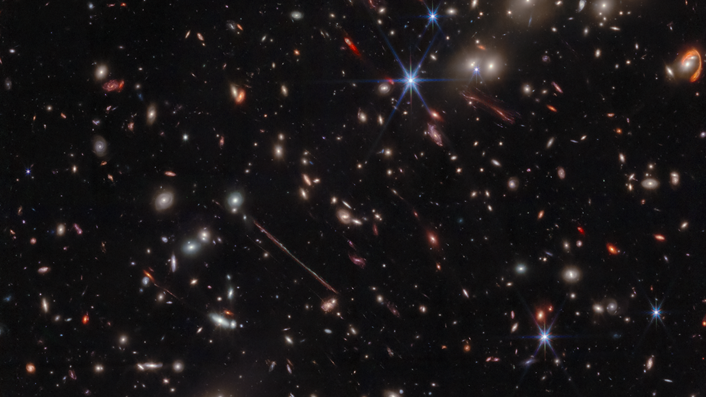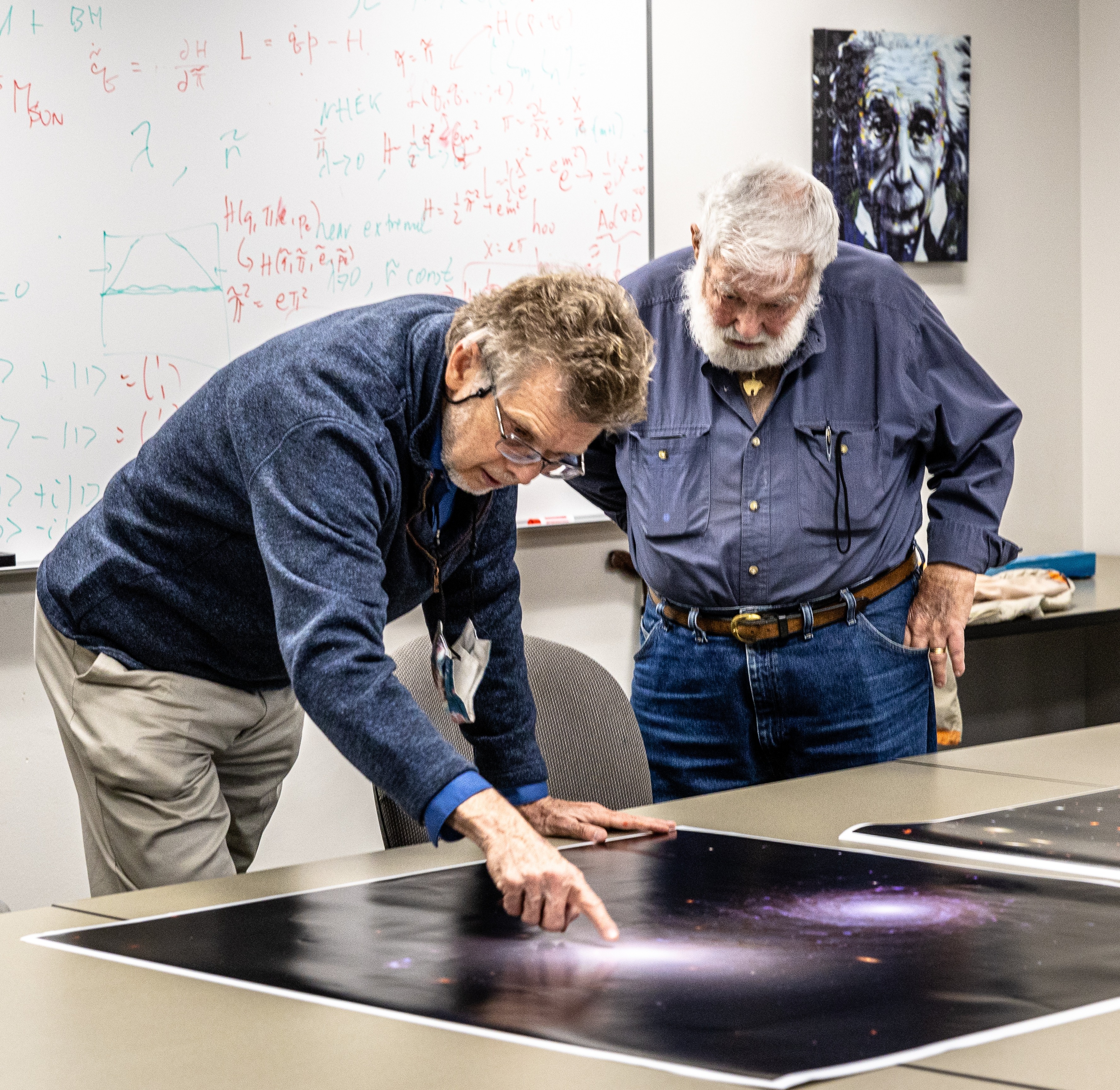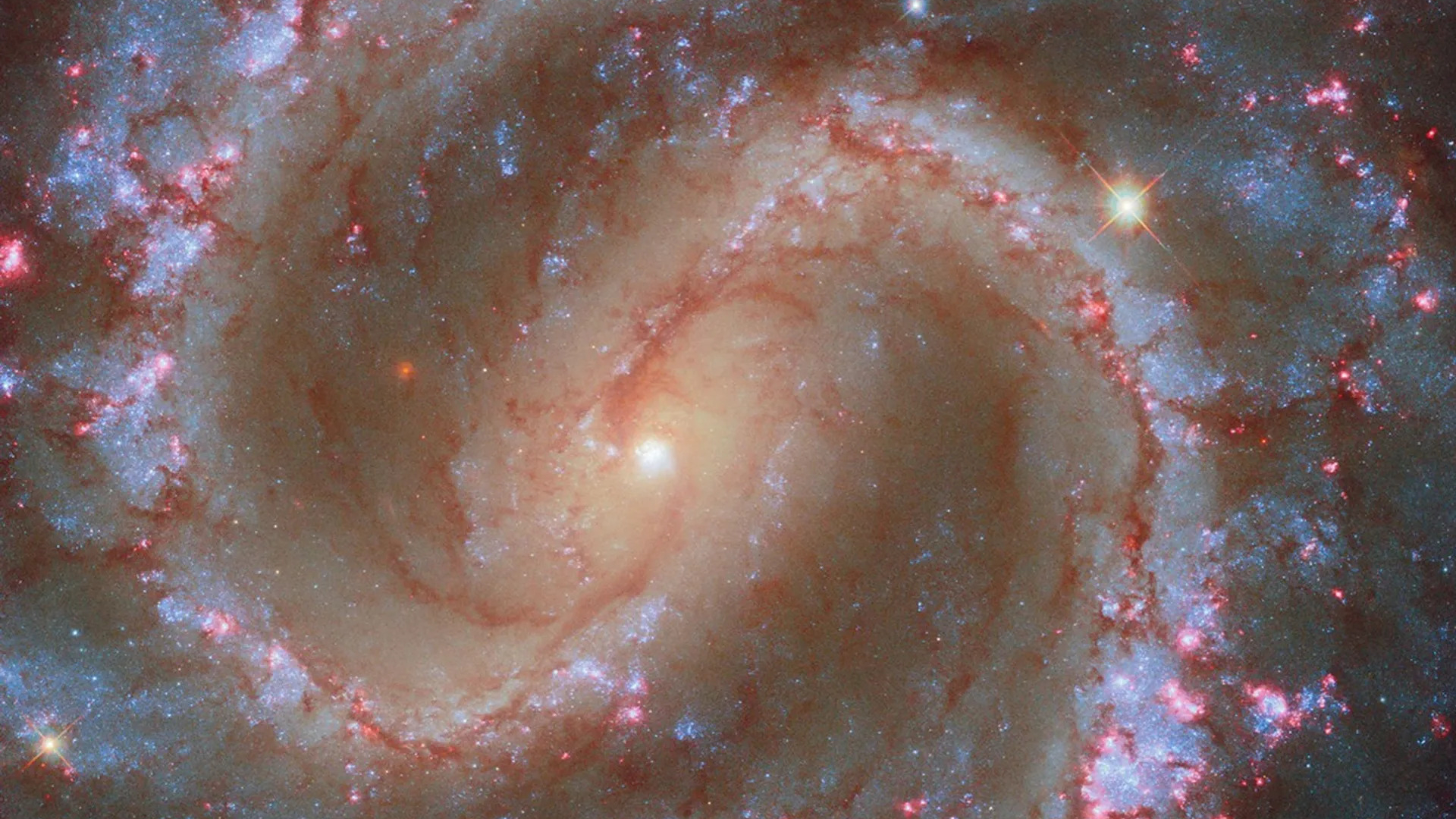The James Webb Space Telescope spotlights Einstein's genius. A fellow Holocaust survivor remembers him as a friend
Albert Einstein's space theories still have deep resonance, nearly 70 years after the famed physicist's death.
The light-bending effects of gravity that Albert Einstein predicted more than a century ago are clearly visible in images from NASA's James Webb Space Telescope (JWST). Recently, a Holocaust survivor who knew Einstein sat down with JWST scientists to look at these images in high resolution.
"He loved — just loved — being with kids," Werner Salinger, 92, said in a statement with Arizona State University, who extended the invitation. "I was just a kid to him, you know?"
Salinger's connection to Einstein, who revolutionized our understanding of space and time, came through a family member. After fleeing the Nazis in Germany in 1939, Salinger's family landed in Princeton, New Jersey. Salinger's grandmother was also a friend of Frau Helen Dukas, Einstein's secretary at the nearby Princeton University. Though the traumatic experience of Salinger's childhood lingers, so too does the special link with Einstein and space research he found in his new home.
Related: Happy birthday, Albert Einstein. We need you right now.
Einstein was also a survivor of Nazi Germany, having arrived in Princeton just six years ahead of the Salingers. The renowned physicist became an outspoken advocate for social justice during the Second World War on matters such as the Holocaust and the development of the atomic bomb.
But to Salinger, Einstein served as a mentor and friend.
Breaking space news, the latest updates on rocket launches, skywatching events and more!
They went on garden walks together and sometimes, Einstein would play the violin. It was the early 1940s, and Salinger was too young to appreciate that Einstein was also studying an intersection of gravity, time and relativity that still underlies our understanding of physics today.
Related: What is the theory of general relativity?
More recently, Einstein's theories have been informing scientific work conducted with the JWST. This deep-space telescope, launched by NASA in 2021, aims to probe the cosmos at unprecedented depths to uncover how physics behaved in the early days of our universe.
A happy coincidence recently brought Salinger into contact with JWST scientists looking at distant galaxy clusters that "gravitationally lens", or sort of magnify, the light of distant objects shining from behind them. Such lensing is an effect directly associated with Einstein's groundbreaking theory of general relativity.
ASU professor Rogier Windhorst, JWST interdisciplinary scientist, was speaking at a high school assembly in Gold Canyon, Arizona about astrophysics. At the same event, Salinger talked to the students about the Holocaust.
Among other things, the Holocaust was the systematic mass murder of six million Jewish people — roughly two-thirds of the European Jewish population — with the use of Nazi camps. This number, however, doesn't account for deaths indirectly caused by the tragic event; an example is Salinger's mother, who died after contracting tuberculosis while fleeing Germany on the ship to the United States.
Windhorst later brought Salinger to ASU to personally meet with other JWST scientists there, and view printouts of some of the footage the telescope gathered in just over a year of observations.
"Einstein never lived to see these images, but he knew his theory was right. Werner was amazed to see these pictures. Einstein never got to see it, but Werner Salinger did," Windhorst said.
One spectacular example was an image depicting the gravitationally warped galaxies of "El Gordo," including an incredibly distant one nicknamed "El Anzuelo," or "The Fish Hook." Glimmering from 10.6 billion light-years away, El Anzuelo's bizarre horseshoe shape is only visible to JWST sensors because of gravitational lensing, just as Einstein predicted. ASU scientists were among a vast team that uncovered the cosmic scene.
"I call it 'Einstein's fish hook.' Windhorst said of El Anzuelo. "The way that these clusters of galaxies modify the images of the distant objects is just out of this world. They get literally 'spagettified' into strings and pencils and weird-looking things."
Windhorst said the team was privileged to show Salinger the images, especially as Einstein thought such things could never be glimpsed by humanity.
"I think it's fair to say we were showing Werner Salinger what was in Einstein's head when he met Einstein in the 1940s, in Princeton."

Elizabeth Howell (she/her), Ph.D., was a staff writer in the spaceflight channel between 2022 and 2024 specializing in Canadian space news. She was contributing writer for Space.com for 10 years from 2012 to 2024. Elizabeth's reporting includes multiple exclusives with the White House, leading world coverage about a lost-and-found space tomato on the International Space Station, witnessing five human spaceflight launches on two continents, flying parabolic, working inside a spacesuit, and participating in a simulated Mars mission. Her latest book, "Why Am I Taller?" (ECW Press, 2022) is co-written with astronaut Dave Williams.


